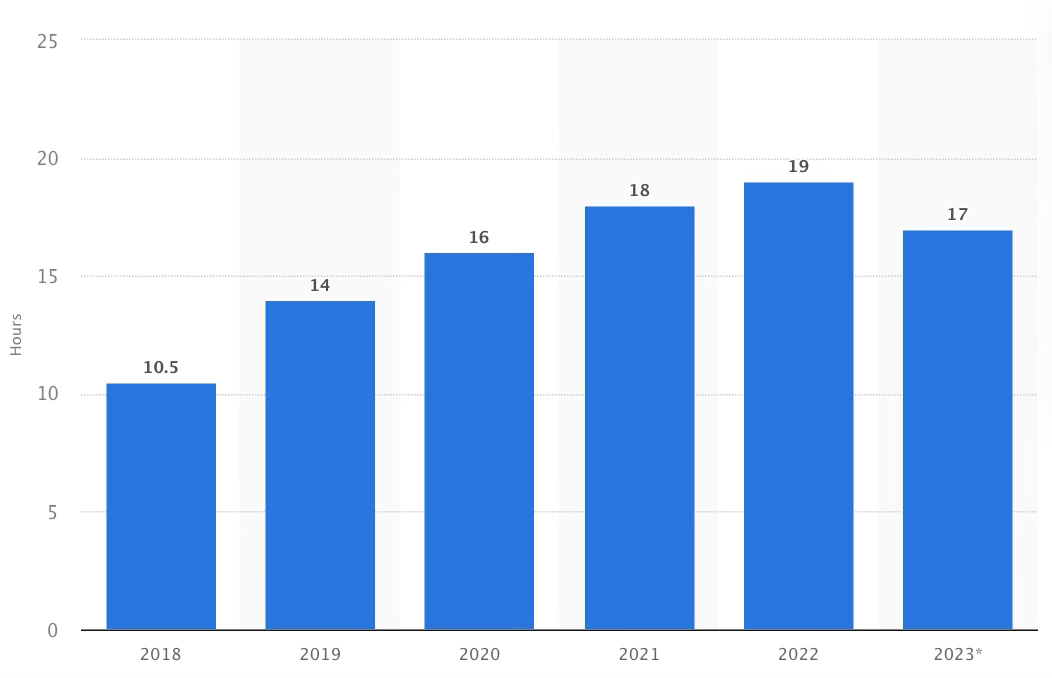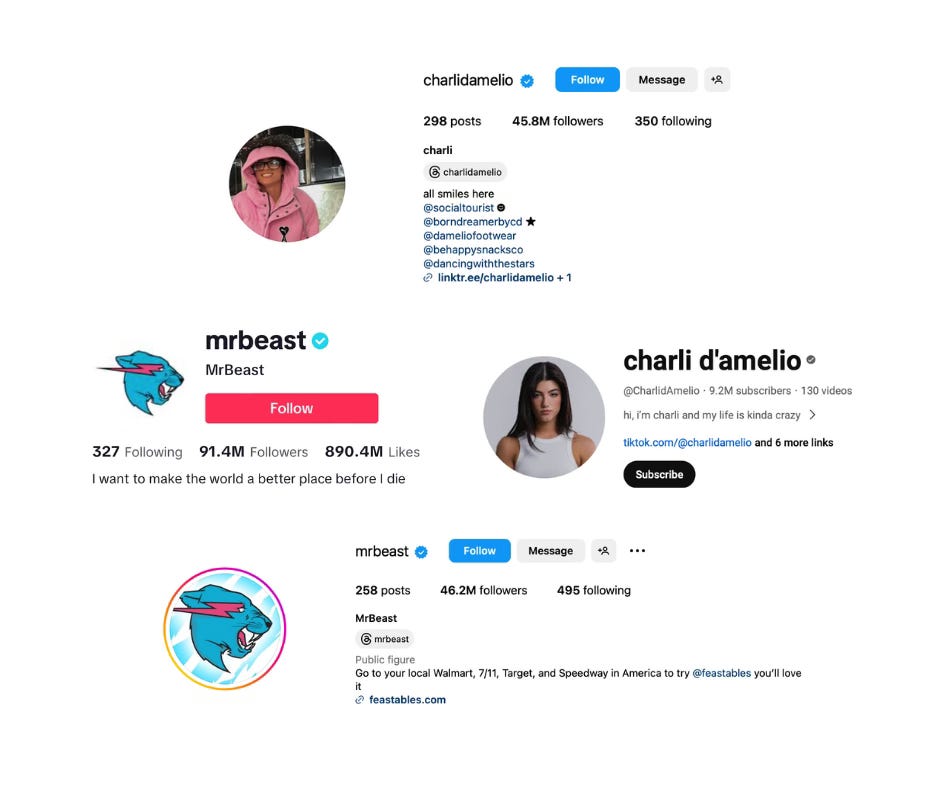Shorts, Reels… these two words have to be most used words in our vocabulary. They manage to creep in almost every conversation I have. The few lucky ones that don’t involve them are often bookended by their use, filling in the vacuum of existence. This isn’t an old man’s lament though. It’s just a fact. We’re watching more and more videos by the day. The graph down below is testament to that.

But no story about this rise in video watching is possible without talking about the platforms that made it all possible. Of course, YouTube was the pioneer here. The platform not only took video watching out of the confines of legacy platforms like TV, movies but spurred on the whole creator economy as well. Its 55-45 revenue sharing model, split in favour of the creator, is still by far the most generous model on the internet. The company has paid north of $30 billion in the past four years to creators. This has really helped YouTube maintain its relevance.
Relevance in the age of TikTok is a really big deal. The company’s short-form videos took the world by storm. In every market it entered, it became a phenomenon. Youngsters snubbed the ‘old’ social media platforms for TikTok, forcing them into a reality check. Their response was… swift, to say the least. The TikTok-ification of social media was everywhere. Endless vertical feeds of short videos with like, comment, share buttons on the right emerged as the de-facto UI for the web. Even Spotify, a music streaming app, forged their latest redesign on these lines. If imitation is indeed the sincerest form of flattery then TikTok should be floored.
TikTok’s impact on the web is not just restricted to UI design. Its algorithmic preference for virality and discoverability is also being aped. Every platform worth its salt is constantly on the lookout for the “next big thing”. That gets enabled through their inbuilt video making and editing tools. This mix of tools and algorithm allows these platforms to maintain a solid grip on production and distribution of content. Consequently though, we’re left with a social media that is not just ‘social media’ anymore. The lines between a YouTube and a TikTok or Instagram are getting blurred by the second because they’re all in the same business of videos. So, that’s why we’re all watching so many videos.
However, this deluge of videos is giving rise to a new problem: participation.
Social media used to be an active place. People would post regular updates online and share everything on it (whether that was good or bad is sadly out of the ambit of this piece). With the rise of videos that suddenly changed. What was once a participative forum for everyone, is now reduced to just passive consumption. Part of the reason for that is the nature of videos itself. It is performative which lends itself to restriction, as not everyone can ease into it. Which is why, while Reels account for nearly 50% of the time spent on the app, Instagram’s major driver of growth has been stories and DMs. No-one’s posting much these days. While TikTok has long been an exception to this phenomenon, a new study suggests that its honeymoon-phase might be coming to an end.
A natural corollary to this claim of lack of participation is, “if fewer people are active online then who are we all watching?” This is where things get interesting. Video watching today is mainly a mix of three sets of suppliers,
The OG- These are the people who have grown along with a platform. They harnessed their first-mover advantage by churning out quality content (not in every case though) constantly. The likes of MKBHD or Casey Neistat on YouTube, the D'Amelio sisters on TikTok etc. Seeing the rise of these platforms and its early set of creators, many others joined. Together, they form the OG creator set and they’re driving engagement across platforms. Charli D'Amelio is as big a Instagram or YouTube star as she is a TikTok star. Same holds true for Mr Beast.
Trying machines- These are the upstarts. They’re the ones who keep interesting. In order to ‘make it’, they post continuously and thus provide fodder to the algorithm. Here too there’s change afoot with the arrival of talent management agencies for creators. These agencies partner-up with a few promising creators and help them in planning content, understand what the algorithms of different platforms demand, and connect them with potentially lucrative brand deals.
IP Piracy and legacy media: This is the third and final set. Increasingly, channels dedicated to famous Intellectual Properties like Friends, Seinfeld, Brooklyn Nine-Nine etc have cropped up. They just post clips from these shows and gain followers and view-count. On TikTok, people are streaming entire movies in 3-minute chunks. On the Chinese-version of TikTok, users are minting money out of this trend by summarising Hollywood movies with Mandarin narration. This blatant copyright violation is a surprisingly significant part of our ‘social media’ experience. Studios, who’d usually have filed a bazillion lawsuits by now, are surprisingly dormant. Some like Paramount have even joined the trend. They released the entire film Mean Girls in 23 chunks on TikTok. In China, production companies are looking to sign deals with TikTok for such content on its platform.
Together, these suppliers are filling up our feed on almost every video platform. Which is what brings me to my hypothesis, that social media is just TV now. Or rather, it’s social TV. You flip through the various ‘channels’ using a rectangular device. Just like the old days, the new Big Three of Google, Meta and TikTok decide what you should see. Sure, it has some nice new additions like it being attuned to your tastes and instant connectivity with your friends through the in-app messaging but other than that it’s pretty much the same.
Why compare it with TV though? Well, TV was our first brush with mass video communication. It had an enormous impact on every facet of life, from wars to news to societal structures. What made TV scale these height was its ubiquity and its place in our cultural parlance. It was the first digital town-square, a place where everything happened. Thus, it only makes sense to call these video platforms as TV’s natural and (might I say) worthy successors.
That is why production companies are fine with the IP violations on these platforms, it’s just a free ad for their services. That is why many are pivoting to making shows exclusively for these platforms. One can and will argue that it’s not the case, that streaming is the next TV. But is it though? Streaming platform are just another product competing for a real estate on the TV of today. On almost every aspect of TV that I mentioned before, these video platforms have completely outperformed traditional TV. That Social TV is here and thriving is just a part of our reality now. It was an idiot box then and it is a idiot box now. What does that say about us though? That’s a question we won’t have to think about as long as the box beckons. 🙃




